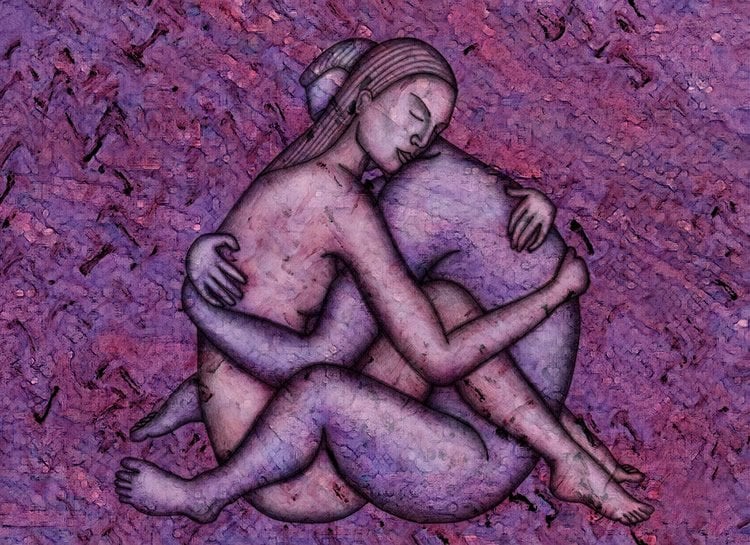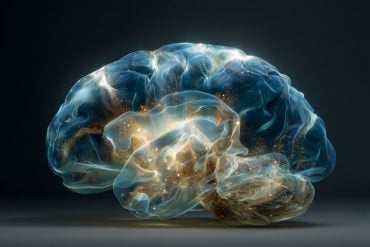Summary: Study explores how interpersonal synchronization could help to decrease pain.
Source: University of Colorado at Boulder.
Fathers-to-be, take note: You may be more useful in the labor and delivery room than you realize.
That’s one takeaway from a study released last week that found that when an empathetic partner holds the hand of a woman in pain, their heart and respiratory rates sync and her pain dissipates.
“The more empathic the partner and the stronger the analgesic effect, the higher the synchronization between the two when they are touching,” said lead author Pavel Goldstein, a postdoctoral pain researcher in the Cognitive and Affective Neuroscience Lab at CU Boulder.
The study of 22 couples, published in the journal Scientific Reports last week, is the latest in a growing body of research on “interpersonal synchronization,” the phenomenon in which individuals begin to physiologically mirror the people they’re with.
Scientists have long known that people subconsciously sync their footsteps with the person they’re walking with or adjust their posture to mirror a friend’s during conversation. Recent studies also show that when people watch an emotional movie or sing together, their heart rates and respiratory rhythms synchronize. When leaders and followers have a good rapport, their brainwaves fall into a similar pattern. And when romantic couples are simply in each other’s presence, their cardiorespiratory and brainwave patterns sync up, research has shown.
The new study, co-written with University of Haifa Professor Simone Shamay-Tsoory and Assistant Professor Irit Weissman-Fogel, is the first to explore interpersonal synchronization in the context of pain and touch. The authors hope it can inform the discussion as health care providers seek opioid-free pain relief options.
Goldstein came up with the idea after witnessing the birth of his daughter, now 4.
“My wife was in pain, and all I could think was, ‘What can I do to help her?’ I reached for her hand and it seemed to help,” he recalls. “I wanted to test it out in the lab: Can one really decrease pain with touch, and if so, how?”
Goldstein recruited 22 long-term heterosexual couples, age 23 to 32, and put them through a series of tests aimed at mimicking that delivery-room scenario.
Men were assigned the role of observer; women the pain target. As instruments measured their heart and breathing rates, they: sat together, not touching; sat together holding hands; or sat in separate rooms. Then they repeated all three scenarios as the woman was subjected to a mild heat pain on her forearm for 2 minutes.
As in previous trials, the study showed couples synced physiologically to some degree just sitting together. But when she was subjected to pain and he couldn’t touch her, that synchronization was severed. When he was allowed to hold her hand, their rates fell into sync again and her pain decreased.
“It appears that pain totally interrupts this interpersonal synchronization between couples,” Goldstein said. “Touch brings it back.”
Goldstein’s previous research found that the more empathy the man showed for the woman (as measured in other tests), the more her pain subsided during touch. The more physiologically synchronized they were, the less pain she felt.
It’s not clear yet whether decreased pain is causing increased synchronicity, or vice versa.
“It could be that touch is a tool for communicating empathy, resulting in an analgesic, or pain-killing, effect,” said Goldstein.

Further research is necessary to figure out how a partner’s touch eases pain. Goldstein suspects interpersonal synchronization may play a role, possibly by affecting an area of the brain called the anterior cingulate cortex, which is associated with pain perception, empathy, and heart and respiratory function.
The study did not explore whether the same effect would occur with same-sex couples, or what happens when the man is the subject of pain. Goldstein did measure brainwave activity and plans to present those results in a future study.
He hopes the research will help lend scientific credence to the notion that touch can ease pain.
For now, he has some advice for partners in the delivery room: Be ready and available to hold your partner’s hand.
Funding: Funding provided by Binational Science Foundation.
Source: Lisa Ann Marshall – University of Colorado at Boulder
Image Source: NeuroscienceNews.com image is in the public domain.
Original Research: Full open access research for “The role of touch in regulating inter-partner physiological coupling during empathy for pain” by Pavel Goldstein, Irit Weissman-Fogel & Simone G. Shamay-Tsoory in Scientific Reports. Published online June 12 2017 doi:10.1038/s41598-017-03627-7
[cbtabs][cbtab title=”MLA”]University of Colorado at Boulder “When Lovers Touch, Their Breathing and Heartbeat Syncs While Pain Wanes.” NeuroscienceNews. NeuroscienceNews, 20 June 2017.
<https://neurosciencenews.com/empathy-neurobiology-lovers-6951/>.[/cbtab][cbtab title=”APA”]University of Colorado at Boulder (2017, June 20). When Lovers Touch, Their Breathing and Heartbeat Syncs While Pain Wanes. NeuroscienceNew. Retrieved June 20, 2017 from https://neurosciencenews.com/empathy-neurobiology-lovers-6951/[/cbtab][cbtab title=”Chicago”]University of Colorado at Boulder “When Lovers Touch, Their Breathing and Heartbeat Syncs While Pain Wanes.” https://neurosciencenews.com/empathy-neurobiology-lovers-6951/ (accessed June 20, 2017).[/cbtab][/cbtabs]
Abstract
The role of touch in regulating inter-partner physiological coupling during empathy for pain
The human ability to synchronize with other individuals is critical for the development of social behavior. Recent research has shown that physiological inter-personal synchronization may underlie behavioral synchrony. Nevertheless, the factors that modulate physiological coupling are still largely unknown. Here we suggest that social touch and empathy for pain may enhance interpersonal physiological coupling. Twenty-two romantic couples were assigned the roles of target (pain receiver) and observer (pain observer) under pain/no-pain and touch/no-touch conditions, and their ECG and respiration rates were recorded. The results indicate that the partner touch increased interpersonal respiration coupling under both pain and no-pain conditions and increased heart rate coupling under pain conditions. In addition, physiological coupling was diminished by pain in the absence of the partner’s touch. Critically, we found that high partner’s empathy and high levels of analgesia enhanced coupling during the partner’s touch. Collectively, the evidence indicates that social touch increases interpersonal physiological coupling during pain. Furthermore, the effects of touch on cardio-respiratory inter-partner coupling may contribute to the analgesic effects of touch via the autonomic nervous system.
“The role of touch in regulating inter-partner physiological coupling during empathy for pain” by Pavel Goldstein, Irit Weissman-Fogel & Simone G. Shamay-Tsoory in Scientific Reports. Published online June 12 2017 doi:10.1038/s41598-017-03627-7






